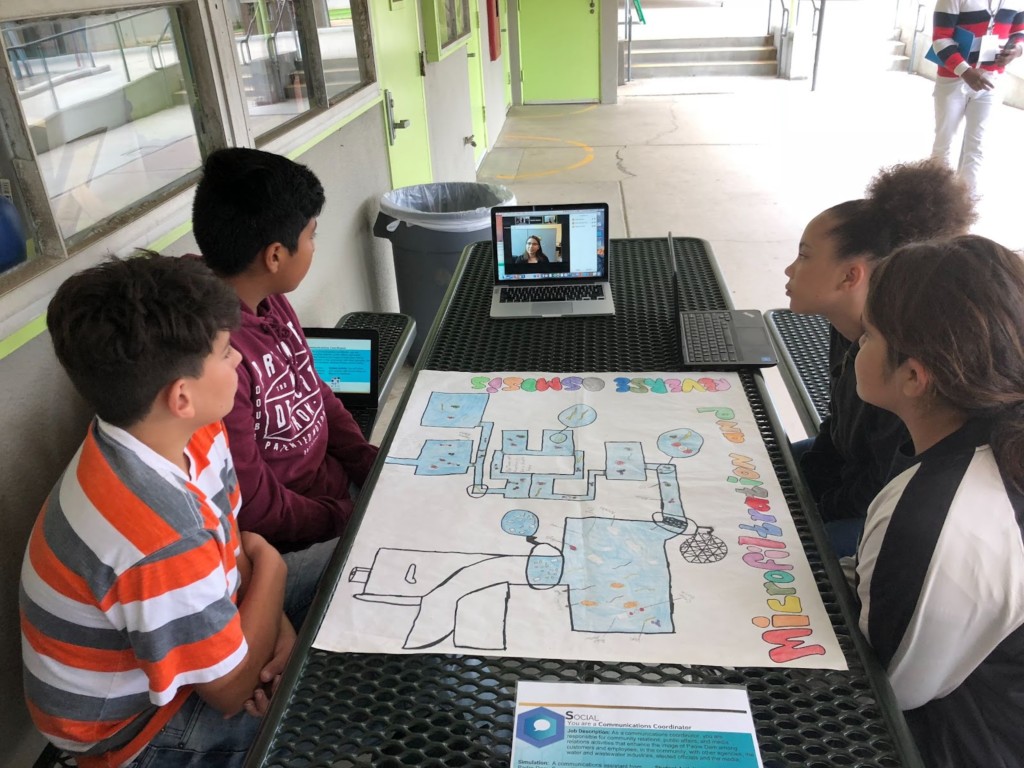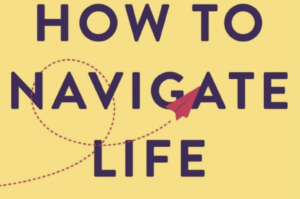Purpose Powered Education
Key Points
-
A sense of purpose motivates and organizes shorter-term goal setting, goal action, and behavior.
-
What if we put purpose, this motivating driver, at the center of education?

“What if purpose were the purpose of education?”
Dr. Heather Malin, Director of Research at the Stanford Center on Adolescence, poses this provocative question in her 2018 book, Teaching With Purpose.
Marlins defines purpose as “a future-directed goal that is personally meaningful and aimed at contributing to something larger than the self.”
A sense of purpose motivates and organizes shorter-term goal setting, goal action, and behavior. “With a sense of purpose, young people are more included to seek out and gain the skills and expertise they need to fulfill their goals, so purpose can drive learning that results in the necessary college and work life skills to succeed,” explains Malin.
What if we put purpose, this motivating driver, at the center of education and, as Mailin asks, “let that purpose be the primary driver of students’ engagement with school?”
Malin’s advice to make purpose central to education is compelling but not simple–purpose is multidimensional and constructed individually. A sense of purpose includes beyond-the-self motivation, a meaningful higher-order goal, and taking action. These three dimensions develop independently and integrate, weaving together what is personally meaningful with what is socially consequential, resulting in fully realized purpose.
Developing Purpose Beyond Self
To develop a sense of purpose beyond self, Malin suggests inviting learners to think about the kind of work they want to live in and how will they participate in creating that world.
An example of fostering a purpose-beyond-self-orientation is the EL Education value of contributing to a better world— “putting learning to use as active citizens, working for social justice, environmental stewardship and healthy, equitable communities.”
One Stone, an innovative Boise high school, features an advisory structure with a Living in Beta curriculum that engages learners in a personalized wayfinding process where they explore ways to connect their interests and talents to real world opportunities. Learners engage in real world experiences that empower learners to prototype and test their curiosities and passions and make key discoveries and insights about themselves.
In east San Diego County, Cajon Valley USD learners reflect on strengths, interests, and values after each of the 54 immersive career explorations in the World of Work curriculum. Learner imagine possible futures as they explore careers exploration is also supported by a partnership with Roadtrip Nation.
Middle school career education classes and high school advisory curriculum with assessments like YouScience and experiences like Major Clarity help identify aptitudes and interests.
Learners at Valor Collegiate Academies (and 60+ partner schools) start the day in a circle of trust and safety exploring what excellence looks like in body, heart, mind, and spirit. Through Valor’s Compass Model, members of the community work to develop their own Inner Compass. “When actions align with purpose” and “when people feel seen and known, amazing things happen.”
Purpose development and career exploration aren’t just a couple high school assessments. “Young people can get a head-start on understanding their own interests and abilities when they have the freedom to explore from an earlier age, the safety to fail repeatedly, and when they are aware of all the options in front of them for the future,” recommends ASA.
Setting Higher Order Goals
“A purpose goal is one that is personally meaningful and connected to what is most central to your identity and feels like something you must do. Most important to our definition of purpose, it is motivated by a desire to be of consequence in the world, to do something positive for the world beyond the self” explains Malin.
For Malin, purpose is acting on a beyond-the-self-oriented higher-order goal in a sustained way. In How to Navigate Life, Dr. Belle Liang and Tim Klein called this applied persistence a purpose mindset. Angela Duckworth said, “Grit is passion and perseverance for long-term goals.”
Marlin suggests inviting learners to articulate a set of values and think about how to live out those values. That includes thinking about their risk tolerance. More than half of Gen Z students say they aspire to be entrepreneurs according to ASA research. “As digital natives with greater access to information and resources than previous generations, it’s no wonder this generation is particularly fired up about starting their own businesses over working in traditional nine-to-five jobs,” said Julie Lammers, Senior Vice President at ASA.
Taking Action, Building Skills
Marlin suggests asking learners what they want for their future, who they are becoming, and how they want to be in the world.
“In order to best help students achieve their goals as aspiring entrepreneurs, we must first help them build durable skills and understand what their passions and talents are,” said Lammers.
Durable skills are foundational for any entrepreneur. As identified by America Succeeds, durable skills include critical thinking, communication and presentation, collaboration, leadership, financial literacy, and creativity.
Learners can take purposeful action and build durable skills in work-based learning–internships and client connected projects. Work-based learning also builds social capital. “Building social capital and making connections with adults who’ve walked students’ desired paths is paramount to success for budding entrepreneurs,” said Lammers.
“Internships carried out in high school can be a valuable part of that experiential learning and can play a vital role in the way young people perceive and understand the working world, well before they feel the burdens of adulthood on their shoulders,” concluded an ASA report.
Developing Purpose
Purpose is developed individually, intentionally, and iteratively by combining information, experience, reflection, and social capital. Learning about the needs of the world (through place-based learning, social studies, travel, and studying the UN Sustainable Development Goals) invites a purpose beyond self. Spirals of career exposure and work experiences informed by values development and aptitude assessments expand and then prioritize possible futures.
“Purpose mindset is about manifesting one’s reason for being, which is simultaneously selfish and selfless, private and public, and internal and external,” said Dr. Sasha Barab, CEO of Lifelab Studios. “It is about taking the time to know who one is, what one has to offer, understanding if the world needs that, and then doing the hard work of realizing it,” added Barab.
Purpose-focused schools (in Difference Making we called them schools alive with possibility) have a strong relationship-based advisory system where learners spiral through a purpose dialog: What are my strengths? What does the world need? What are my interests? What could I get paid for? How could I contribute? What is the pathway to opportunity?
Helping learners develop purpose isn’t quick or easy (or permanent) but it’s a powerful motivator that builds performance and persistence and informs co-constructed learning journeys.
This post is part of our New Pathways campaign sponsored by American Student Assistance® (ASA), Stand Together and the Walton Family Foundation.
This post was originally published on Forbes.








0 Comments
Leave a Comment
Your email address will not be published. All fields are required.